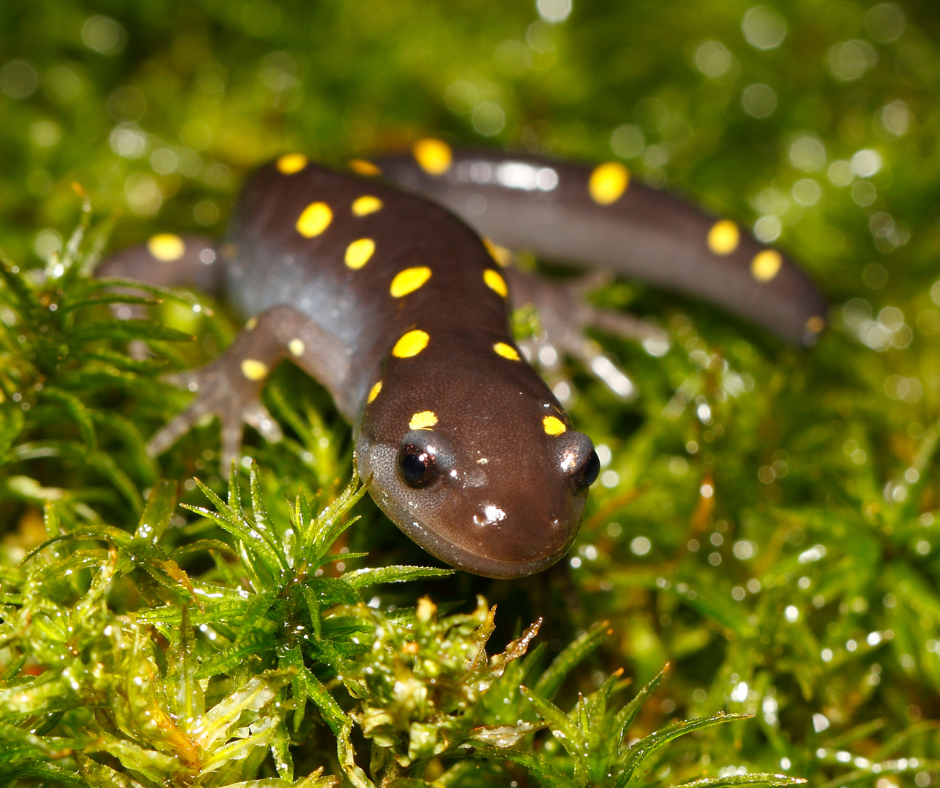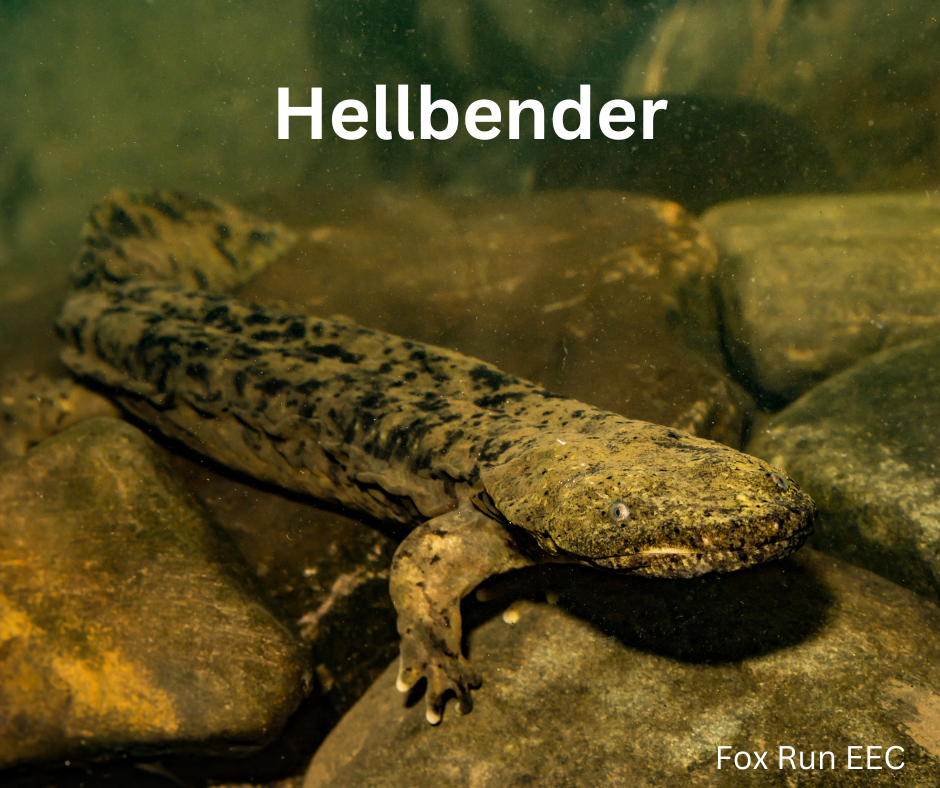Updated June 26, 2025
In the United States, we have over 250 species of salamanders. The Eastern US has the greatest diversity worldwide. Salamanders are a unique group of animals. They are amphibians, like frogs, and have life stages in water or on land.
And spring and fall are great times to look for them in the wild. Im going to give you some tips on finding salamanders in the wild and some common species to look out for.
Handling Salamanders
First things first.
When holding a salamander be respectful of its body.
Salamanders can get squished pretty easily. Hold your hand flat and close to the ground. That way if they make a run for it they won't fall and get hurt.
Look at them for a minute and then let them go back to their salamander business.
We do want to make sure we have clean hands and do not handle them too much. It also helps if your hands are wet so as not to dry out their skin.
You never want to hold the salamander by the tail. And never dangle them above the ground. This would be frightening for the animal and disrespectful.
Remember that salamanders are delicate. Don’t hold them in the sun.
Where Can I Find Salamanders?
Salamanders are widespread throughout the United States. They dehydrate easily so are most often found in wetlands or moist forest areas.
9 Places To Look For Salamanders
Now let’s talk about where to find them!
Slow Moving Creeks
In spring and summer, you may see eggs or larvae around creeks and ponds. Slow-moving streams with lots of cover are the best bets. Cover may include rocks, fallen trees, and plants growing low to the ground.
Hellbenders are the largest salamander species in the US and have interesting wrinkled skin. They are listed as “near threatened” by the government because of a declining population.
2. Vernal Pools
Salamanders especially like vernal ponds. These are seasonal pools without fish so they make a great breeding ground for amphibians.
Vernal pools are temporary wetlands that appear during spring or after heavy rains. These unique ecosystems are essential breeding grounds for many salamander species, providing predator-free environments crucial for larvae development.
During early spring nights, especially after a warm rain, you might witness an amazing natural phenomenon—mass salamander migrations toward these temporary pools. It's an incredible sight, featuring countless salamanders journeying across the landscape. Exploring vernal pools responsibly and respectfully can offer unforgettable salamander encounters.
Scientists call them ephemeral wetlands. Look for these pools in springtime after spring rains. Look for clusters of eggs. Do not handle the eggs as the casing can get pulled apart exposing and killing the unborn salamander.
Similar to frogs salamanders have a life cycle that takes them through four stages; egg, larva, juvenile, and adult. Salamanders lead a double life. Just like having a secret identity.
Salamander eggs are laid in clumps that are surrounded by an outer layer of gelatinous material. Frog eggs don't have that outer layer.
Salamanders, like frogs, have two distinct life stages.
They have a larval stage and an adult stage. The larvae form of the marbled salamander can often be seen in ponds in the spring in the eastern us.
Springtime is a fabulous season for finding vernal pools
3. Temperature
Salamanders will be out hunting and looking for mates in cooler weather than you may think. The best temperature is between 45 - 65 degrees to find them out and about.
4. Decaying Logs
Some species lay their eggs in moist areas under logs or rocks. Decayed logs like this one are a good place to look for salamanders. The log is absorbing lots of moisture. Look for a log with sprouting fungi.
The decaying action gives the critters a place to crawl into, stay moist, and look for prey. Turn logs over gently and roll them back in the same place after you peak under them.
Clouded Salamander is common in northwest forests. They are lungless and breathe through their skin. Look for it near fallen Douglas fir trees. They like to hide under bark. Photo Credit: Oregon Department of Fish & Wildlife
5. Snake Country
Be cautious and aware if you have venomous snakes in your location. For example, young cottonmouths and copperheads also appreciate a moist location. Always wear sturdy hiking boots when you are looking for salamanders.
Check out my video on copperheads here.
Subscribe to our YouTube Channel!
6. Showers
Rainy days often bring salamanders out of their underground hiding places and to the surface of the ground where they are easier to spot. Grab an umbrella and some sturdy boots and get looking!
The Tiger Salamander has several sub species and lives throughout much of the US. They are noctural so a good salamander to look for on a night hike.
7. Night Hikes
So what is super cool about salamanders? They glow in the dark! Biofluorescence occurs in many species. Biofluorescence is the ability to absorb visible and ultraviolet light and re-emit it at a lower energy level.
You do need a special flashlight for this but they cost the same as a regular flashlight which you can find here.
So take a flashlight walk and look for salamanders at night. You will need a regular flashlight and a UV flashlight. Many species also hunt at night so nighttime is a good time to spot them.
8. Caves
Salamanders live in caves. Some live near the opening of the cave and may venture out to hunt. Others live deep in the cave and have developed extraordinary senses to adapt to their environment.
9. Build A Salamander Habitat
There are lots of things that you can do to help salamanders. My last tip is to build your own amphibian-friendly habitat in your backyard.
Providing wildlife habitat in your yard and making it salamander friendly is a great way to provide them with places to breed and look for food. This is a great example of a shallow pond geared towards amphibians. Yes, that would be a fish pond with no fish.
The fish feed on the frog and salamander eggs so in this instance we don't want them. If you build a backyard pond you can add plants and rocks along the edges. This makes a great place for amphibians to hide during the day and lay their eggs.
Salamanders need dark, cool places to hide during the day. Old logs, rocks, and patio stones make good habitats for them. I once moved a large plastic dog house and saw two spotted salamanders scurry away. A garden path with low-growing plants can make a good salamander habitat.
Piles of rocks on the edge of a yard can provide erosion control and a place for water to pool. It makes a nice hiding spot for salamanders.
This is also a great salamander habitat
Salamander Conservation
Salamanders are an important indicator species. They have very porous skin and easily detect pollution.
They are an important part of the food web in their niches. Unfortunately, salamander populations are rapidly declining. This can have devasting effects on other species.
Habitat loss, water pollution, and disease are all negatively affecting salamanders.
You can read more about Bsal disease in my blog on Kentucky Salamanders.
Do Salamanders have Toxic skin?
Know the species in your area. Many salamander species can excrete toxins from their skin. If you were to ingest these toxins they could make you very sick.
Wash your hands well after touching a salamander.
All amphibians also have bacteria in their skin that can make a human sick so hand washing is important as well.
Another great books for kids that I love!
Salamander Song
5 Common Salamander Species
1. Eastern Red-backed Salamander (Plethodon cinereus)
Appearance: Slender body, typically with a distinct reddish stripe running down its back, although some individuals may be uniformly dark.
Habitat: Commonly found beneath logs, rocks, and leaf litter in deciduous forests.
2. Spotted Salamander (Ambystoma maculatum)
Appearance: Robust body with striking yellow or orange spots along its dark body.
Habitat: Often found around vernal pools and deciduous forests; visible during breeding migrations in spring.
3. Tiger Salamander (Ambystoma tigrinum)
Appearance: Large and thick-bodied with bold yellow blotches or bars on a dark background.
Habitat: Prefers wetlands, ponds, and forest edges; burrows underground and is rarely seen outside breeding season.
4. Northern Dusky Salamander (Desmognathus fuscus)
Appearance: Brownish-gray with darker markings and a distinctive light line running from the eye to the jaw.
Habitat: Typically found near streams and springs, hiding beneath rocks and logs.
5. Red-spotted Newt (Notophthalmus viridescens)
Appearance: Juveniles (efts) are bright orange-red; adults are olive-green with red spots.
Habitat: Commonly found in ponds, lakes, marshes, and damp forests.
Author Ame Vanorio is the founder of Fox Run EEC and thinks salamanders are pretty cool.
















Creeks and streams provide a place for children to explore nature. Around creeks, kids can see various animals and plants that make up a complex food web. Everything is connected, and the survival of one animal is often dependent upon the survival of another.